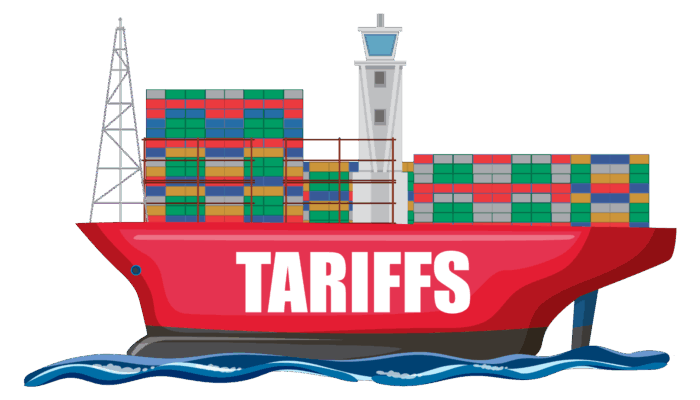In the retail and ecommerce world, “pure play” is becoming more and more of a buzzword. Left and right, new ‘online only’ brands are challenging traditional brick and mortar retailers and are often growing at tornado-like speed. Brands like Warby Parker, Casper, Gilt, Birchbox, and Amazon have seen incredible growth. What’s more, 2020 saw a huge uplift in online sales. In fact, some clients did 5-10 times their 2019 online order volume—and the uplift is here to stay. This means the ability to scale fulfillment operations for pure play retailers has become ever more important.
But with growth comes fulfillment complexity.
As a pure play retailer you might add more stock locations, such as Distribution Centers (DC) or Drop Ship Vendors (DSV). Or more channels, like marketplaces, or an online store in a new region. Or maybe you offer Value Added Services that are hard to manage at scale. Whatever the challenge, when your fulfillment operations reach a certain level of complexity, you need a better way to manage them.
In other words: you need the power of an Order Management System.
So let’s look at 6 signs a pure play retailer might benefit from an Order Management System.
1. You Ship from Multiple DCs or DSVs
When you start out as a pure play retailer, you operate from, typically, one Distribution Center. But as you grow, so do your fulfillment needs.
- Multiple Distribution Centers (DCs)
Some retailers will choose to expand in the same location. However, if you have multiple DCs in different regions, you can house your inventory closer to customers. This lets you deliver faster.
- Multiple Drop Ship Vendors (DSVs)
Drop Ship Vendors are popular because they provide two benefits. They let you expand both your product range and your fulfillment capacity. It also lets you test new products without paying for stock up front. It’s a win-win. But when you use DSVs you need to keep a lot of data in sync. This includes inventory data and order status, to name a few. And it can get even more complicated with returns.
And if you have the same stock in multiple locations you’ll want to ship from the best location. This might be the location closest to the customer, but there are other factors too — the location with the fastest turnaround time, oldest stock, or best on-time delivery rate. There are many ways to optimize your order routing and maximize the margin on each order.
2. You want to control what stock you make available to Marketplaces and Social channels
These days marketplaces come in all shapes and sizes. From Amazon and eBay, to private label marketplaces driven by solutions like Mirakl. And social selling is on the rise too. But what if you don’t want to sell all your products in every marketplace or on every social channel? What if you want to control what you make Available to Promise (ATP)? What’s more, how do you trigger order and stock updates to third-party systems?
3. You offer Value Added Services or need to manage multi-component products
Special services can be a competitive differentiator. From simple gift wrapping, to embossing, embroidering, to product assembly. They make your customer experience feel special. But what if the components for a single order come from multiple places? This might be simple order consolidation so two items can be wrapped together as a gift. Or it could be more complex.
Think about a high-end bicycle. The frame, seat and wheels may all come from different vendors. How do you track all the inbound shipments, stage the components, and trigger the assembly process once they all arrive?
4. You’re expanding globally
Every market is different. It might be differences in customer preferences, local carriers, country specific payment or returns policies. As a result, many pure play retailers like to use a core set of fulfillment rules, a ‘template’, they can ‘copy and paste’ from one region to another. This lets them expand faster. But it’s important that the fulfillment logic can be customized for each region. That way you can take advantage of economies of scale, yet still accommodate regional needs.
5. You’re growing through acquisitions
Your company is growing – which is great. But you also want a single view of inventory, and economies of scale. If all your brands use a single order management system it can provide advantages. You can have standard fulfillment rules across brands, yet still let each brand tailor them to fit their own customer preferences. And when you share inventory locations across brands you can try new tactics, like cross-brand merchandising.
6. You need a better way to manage returns
Customers are getting more and more discerning. A poor returns experience may mean a lost customer. Returns must be quality checked before they are released as saleable inventory, but how can you do that effectively as the returns pile up – and quickly? What about reverse logistics? Once you’ve received returns, what is the most efficient way to process them and get them ready to resell? With ecommerce returns ranging between 20-30% an optimized returns process is paramount to success. Plus, you’ll build brand loyalty as a result.
What’s the best way to manage fulfillment complexity?
So, how do you manage all of these stock locations? Channels? Value Added Services (VAS)?
Often pure play retailers try to use their ecommerce, ERP or Warehouse Management System (WMS) to manage fulfillment, but as complexity grows, so do the challenges. ERPs aren’t designed to manage near-real time inventory updates from multiple systems. Warehouse Management Systems aren’t great at managing orders across multiple locations. And none of them do a good job of managing channel specific stock availability and safety stock buffers.
For that, you need an order management system (OMS) that can manage your Available to Promise inventory and order updates and take the stress off your shoulders.
But not just any OMS. You need an OMS that can:
- Keep your inventory in sync across multiple DCs and DSVs in near-real time
- Give you control over what you sell in each channel or market, including safety stock/buffer management
- Sync order status updates across all your sales channels including online store, marketplaces and social
- Let you tailor the fulfillment logic to fit your business needs
- Manage VAS processes or multi-component orders more efficiently
- Automatically trigger notifications and events in other systems as required
Fluent Order Management is a cloud-native distributed order management solution for pure play retailers looking to rapidly grow their brands. To see it in action, request a demo today.




